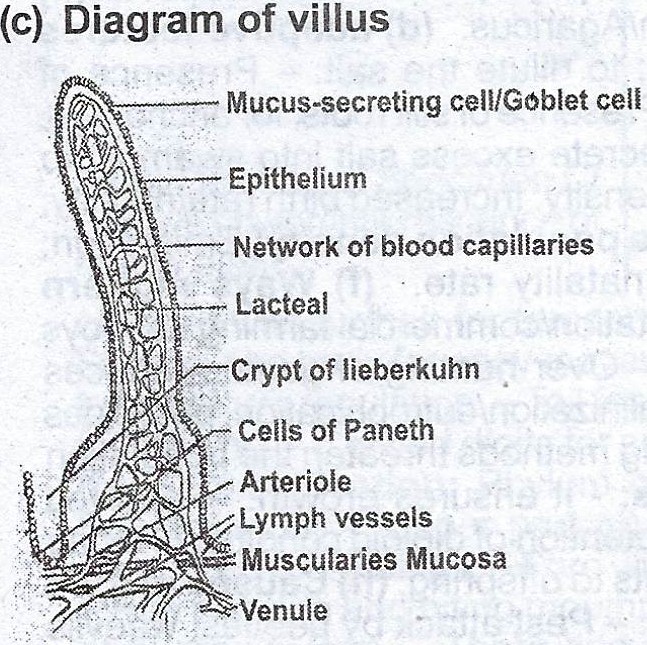(a) Define the following in
(i) elimination
(ii) excretion
(iii) secretion.
(b) Describe the digestion of boiled fish in the gut of humans
(c) Make a diagram 8cm – 10am long of a longitudinal section of a villus and label fully.
Explanation
(a) Definition of terms:
(i) Elimination: Removal of undigested food; from the body of living organisms.
(ii) Excretion: Removal of waste products of metabolism; from the cells/tissues of an organism; may be toxic if retained in the body.
(iii) Secretion: Production and release of substances; useful to the body; by specialized glands of living organism.
(b) Digestion of boiled fish in the gut of humans: Boiled fish is a source of protein; chewed and swallowed into the stomach; digestion of protein starts from the stomach; stomach secrets gastric juice; containing pepsin, rennin and hydrochloric acid; pepsin in acidic medium acts on the boiled fish and convert it to peptides; peptides move into the duodenum/small intestine; into which pancreatic juice is secreted; undigested protein is acted upon by trypsin in alkaline medium; into peptides/peptones, erepsin finally acts on peptides/peptones in alkaline medium; and converts it into amino acids.
(c) Diagram of villus

Title TL: - Longitudinal section of villus. Size: (8 — 10cm long).
Quality (Q): Clarity of lines. Neatness of labels.
Details: Epithelium layer shown (EL) Conical shape of villus (one cell thick) (CV).
Labels (L): Epithelium layer blood capillary, lacteal, lymphatic vessels, goblet cells, venule, arteriols, cryps of lieberkuhn, cells of paneth, muscularis mucosa.

